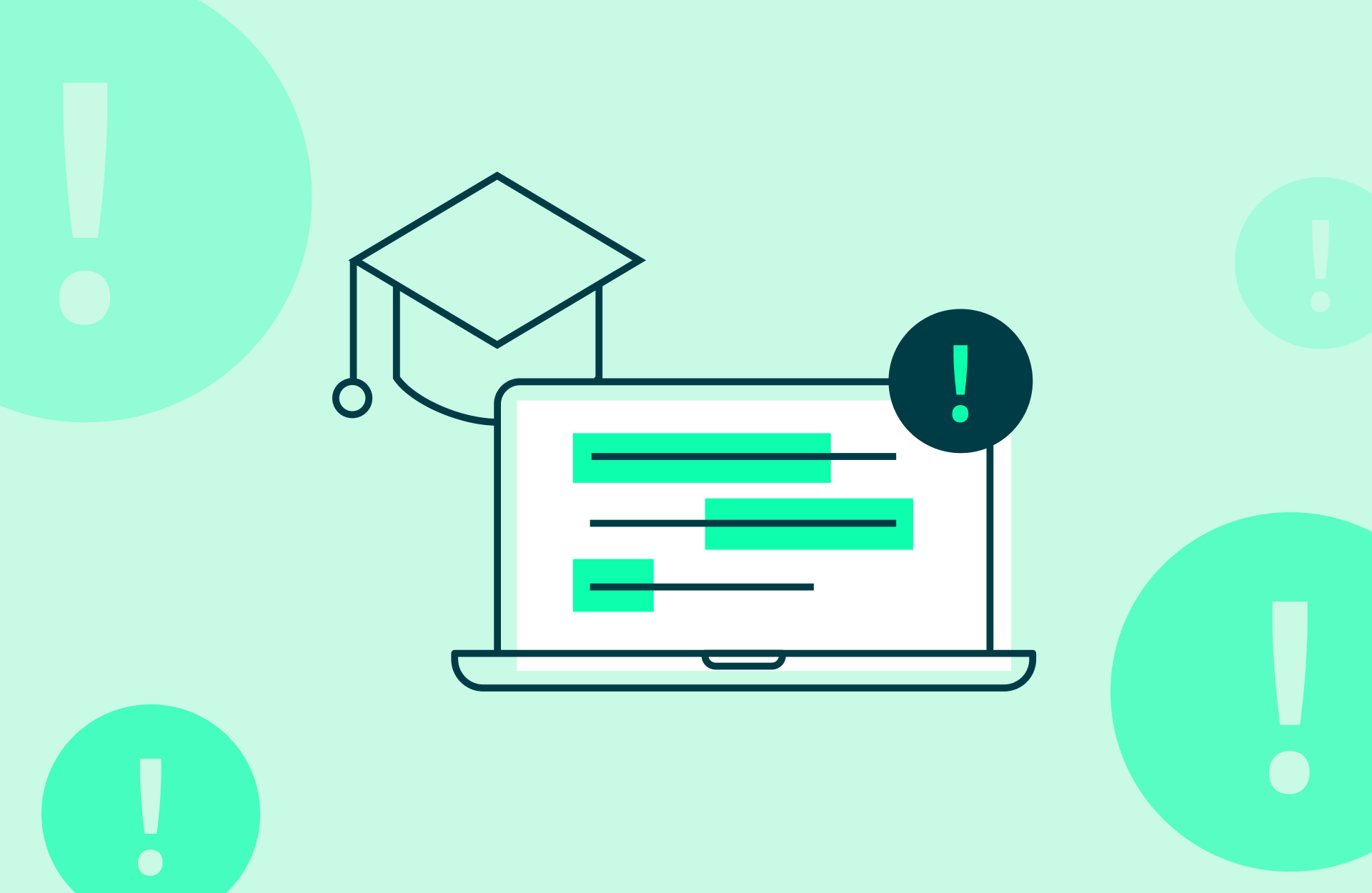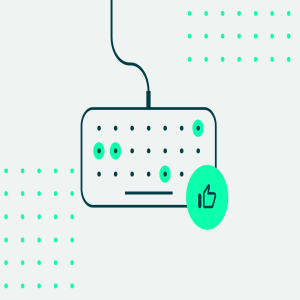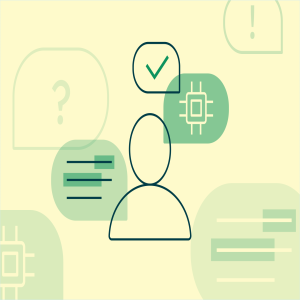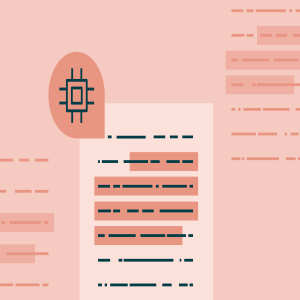The integration of Artificial Intelligence (AI) and AI writing in academic settings has become a topic of keen interest and importance for educators and institutions across the past year.
As such, we sat down with Dr. Leslie Layne, an associate professor at the University of Lynchburg, Virginia (USA) with nearly two decades of experience, to hear her valuable insights and better understand how she’s embracing the opportunity that AI writing can bring to the curriculum.
In her interview, she centered on five main areas of focus, offering advice on AI integration:
1. Integrate AI writing tools as a learning aid.
2. Focus on its constructive use.
3. Encourage original thinking.
4. Embrace technological change.
5. Integrate AI tools into your academic policy.
As a pioneer in the use of AI and AI writing detection tools at her institution, Dr. Layne's aforementioned tips, her experience, and her expertise are particularly relevant in today's tech-driven academic environment.
Dr. Layne’s journey with edtech and AI tools
Layne's tenure at the University of Lynchburg has been marked by significant involvement in the development and implementation of both educational technology (edtech) and AI tools. Layne has taught 76 freshman writing classes and has used Turntin for 104 overall classes since starting at the University of Lynchburg in Fall 2004. This extensive experience has positioned her as a key figure within the university, particularly with her role as the Coordinator of College Writing and "Turnitin Guru".
Prior to the launch of Turnitin’s AI writing detection capabilities, Layne used Turnitin extensively to give student feedback on writing and to streamline her grading process. This meant she was not only prepared to adopt AI detection features when they became available, but she was already very well-versed in the Turnitin workflow.
Reflecting on the challenges before the advent of efficient AI writing detection tools, Layne recalls, "It was really time-consuming to copy and paste text into online detectors." This process, while necessary, was far from efficient and 100% accurate, underscoring the need for more streamlined and reliable solutions. The introduction of Turnitin's AI writing detection tool was a game-changer, providing consistency and a much-needed ease of process.
“Grading essays takes time. I'm very fine tuned to the amount of time that it takes to get done what I need to get done, so I was absolutely delighted to hear that Turnitin was incorporating AI writing detection, because then everything is in one place.”
Like many instructors, Layne was attracted to the idea of streamlining her grading process while also ensuring the integrity of her students’ papers. The new Turnitin Similarity Report, launched in October 2023, hosts a fully integrated experience that gathers similarity, flag insights, and AI writing detection tools, and brings them into one cohesive workflow, optimized for readability and simplicity. “I don't want to have to click into 1,000 things,” says Layne. “The feedback is there, the grade is there, the AI detection and the plagiarism detection is there — everything.”
The value and challenge of using AI as an educational tool
A central theme in Layne's approach is the constructive use of AI in education. Rather than viewing AI as a threat to academic integrity, she advocates for its integration into the learning process. "I do teach with AI in my freshman writing classroom, so I'm having them use ChatGPT in almost every class period," she explains. This hands-on approach with AI equips students with the skills to navigate and leverage these tools both effectively and ethically.
There are numerous examples across North America of successful implementation of AI tools in the classroom. For example, in a US study involving 18,700 participants from 147 middle and high schools, which analyzed the change in grades in algebra, the students who used the AI education software “MATHia” alongside traditional textbooks exhibited notably higher average scores than those who studied only with textbooks (Pane et al., 2014). Additionally, research has shown the hope for Artificial Intelligence in Education (AIED) to significantly reduce teachers’ administrative workload by taking over simple and repetitive tasks (Qin et al., 2020).
That said, despite the utility of AI tools, Layne emphasizes the importance of fostering originality in student work. She designs assignments that challenge students to think critically and creatively, thereby reducing the temptation to rely solely on AI-generated content.
“I'm teaching with ChatGPT and getting the students to use it to assist with structuring their writing and brainstorming. I don't use it [Turnitin] as ‘Gotcha!’ detection. I use it as a heads up for me to follow up with my students and ask them to use more of their own voice."
Layne's use of AI writing detection tools is characterized by a focus on student development rather than punitive measures. This approach fosters a learning environment where students are encouraged to improve their writing skills and develop their voice, rather than fear disciplinary repercussions.
Layne is also hyper-aware of informing students about the appropriate use and citation of AI writing tools. One challenge instructors are facing is how to appropriately integrate AI writing tools into the writing process, let alone how to teach students how to cite tools like ChatGPT in their papers. “When I am teaching students about plagiarism,” she says, “I also mention that submitting AI writing [without citation] would be the same sort of academic integrity violation. I tell them that when they put their name on something and hand it in, that is their Honor Code affirmation that this item contains their work."
In her book, International Students: A Conceptual Framework for Dealing with Unintentional Plagiarism, Ursula McGowan posits that undergraduate students ought to be viewed as novice researchers. She emphasizes the need for them to receive guidance and support, particularly in handling instances of unintended plagiarism. According to McGowan, feedback provided in such situations should be wholly non-judgmental and solely constructive (2008).
This is particularly notable because, according to a recent Tyton Partners survey*, 97% of institutions don’t have a formal AI writing policy, leaving the decision-making and instruction around use and misuse of these tools to the instructors. Institutions need to make more of a solid effort into guiding rather than penalizing their students at this intersection of academic integrity where the boundary between originality and misconduct are extremely hazy.
*Turnitin was a partner in providing compensation to conduct this study.
The future of AI in education
The overall instructor perception of generative AI tools has highlighted that, in the past, they have been notably influenced by the concept of AI disseminated through the media and science fiction, which has caused them to consider AI to be an occupational threat that would replace their jobs rather than be used to support the enhancement of learning and instruction (Luckin et al., 2016).
However, despite said perceived “negativity”, there are still many educators who are actively exploring AI tools as they are newly released to the public. According to the Office of Educational Technology with the US Department of Education:
“Educators see opportunities to use AI-powered capabilities like speech recognition to increase the support available to students with disabilities, multilingual learners, and others who could benefit from greater adaptivity and personalization in digital tools for learning. They are exploring how AI can enable writing or improving lessons, as well as their process for finding, choosing, and adapting material for use in their lessons” (Cardona et al., 2023).
Looking ahead, Layne maintains an optimistic yet realistic perspective about the role of generative AI tools in education: "Students’ awareness and adeptness at using AI tools is going to increase,” she says. “That’s locked into the future. If you think you're going to forbid students to use it and threaten them with all of these punishments if they're caught using it, then you're kidding yourself. I mean, I've seen universities making these Draconian policies and stuff like that, and I’m like no, no, embrace the future. It's here, and it's just going to be more and more here, so it will increase as we go forward."
This forward-thinking mindset is crucial in preparing both educators and students for a future where AI is an integral part of the educational experience. In fact, most faculty strongly believe that AI tools will be needed for students’ future professional success. Moreover, a startling 75% of students are prepared to use AI, despite institutional bans, which means there is more of a need than ever for educators like Layne to responsibly and meaningfully integrate it into their courses.
How can educators use AI tools in the classroom?
Research shows that the successful implementation of new instructional technologies is closely related to the attitudes of the teachers who lead the lesson (Fernández-Batanero et al., 2021). With this in mind, we’ve summarized the top five tips from Layne to help support instructors’ meaningful and responsible AI integration into the curriculum:
Top five tips from Dr. Layne:
- Integrate AI as a learning aid. Utilize AI tools to enhance the educational experience, not just for detection purposes. Because it’s clear that students will use these tools whether or not they have formal instruction or permission, it is helpful to provide structure and guidance around something this impactful. From brainstorming and editing exercises to supporting Second Language Learners, there are myriad opportunities to incorporate generative AI tools positively and productively.
- Focus on its constructive use. AI writing detection can and should be used to guide and improve student writing. There is also so much more at play than most realize when it comes to AI usage, including whether or not Second Language Learners utilize a translation tool powered by a Large Language Model (LLM) that shows up in an AI writing detector.
- Encourage original thinking. Design assignments that promote critical and creative thinking, reducing reliance on AI-generated content. When faculty are able to craft assignments in a way that focuses on the writing process, they can see the final product taking shape in stages and that relieves some worry about students fully using AI to generate the final product.
- Embrace technological change. As overwhelming as it might feel, it’s important to recognize the growing role of AI in education and prepare accordingly. There is value in integrating new technology into your curriculum and these resources can support both instructors and students as they navigate the ever-changing terrain of AI in academia.
- Integrate AI into your academic policy. Stay updated with AI advancements and continuously adapt, not only your teaching strategies to leverage these technologies effectively, but also your academic policies so that they reflect the changing technology.
Conclusion: Navigating AI writing detection in higher education
Dr. Leslie Layne's pioneering and pragmatic insights provide a valuable roadmap for educators navigating the integration of AI in academic settings. Her approach – emphasizing the educational potential of AI, advocating for original student work, and using AI writing detection as a tool for improvement – offers a balanced perspective in an area that is often met with apprehension.
As we move forward in this AI-driven era, it’s critical to find a way to leverage technology and maintain academic integrity; the proactive adaptation by educators and institutions means we can harness the full potential of technology thoughtfully and ethically. This forward-thinking approach prepares students for a future where AI literacy is essential, ensuring they are adept not only in using these tools but also in understanding their implications.







